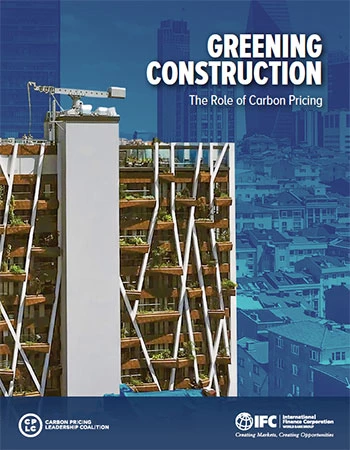Putting a price on carbon can be an effective way for governments and organizations across sectors to effectively alter behavior in favor of lower-carbon choices. The construction value chain is a complex, highly fragmented mix of life-cycle stages, delivery models, and stakeholders, with few incentives to consider climate change impacts. Carbon pricing is yet to achieve its potential when it comes to driving behavior change in construction.
This study explores how carbon pricing mechanisms can be designed better to more effectively account for emissions from the construction value chain. It identifies raw material production and use as the stages with highest emissions, and outlines the need for intervention at the earliest stages of the project to reduce emissions along the lifecycle. The analysis also finds that the method of project delivery and financing can impact the emissions profile of a constructed asset.
